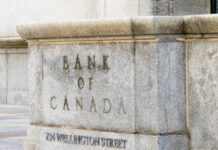Markets
European markets after the long weekend resumed trading in a familiar way. Persistent uncertainty on growth in Europe but also in the several Asian countries, combined with inevitable policy tightening to address inflation is raising questions on the valuation of (some) risky assets. Headlines on Russia stepping up their attacks toward the Donbas region didn’t help to provide comfort. European equities are losing up to 0.85% (EuroStoxx50). At the same time, interest rate markets continue to the push the ECB to prioritize inflation whatever the outlook for growth. Thursday’s rather vague ECB communication on when and how fast they will address runaway inflation and unravelling inflation expectations only reinforced markets to do at least their part of the job. The German yield curve again bear steepened with yields rising between 3.5 bps (2-y) and 10 bps (10-y). EMU 10-y inflation swaps are rising further north of the 3.0 % mark (3.05%).The German 10-y is reaching the highest level since July 2015, nearing the key 1.0%/1.06% (peak 2015) area. The 10-y European swap (1.66%) already surpassed comparable references earlier. In this context, it is bit remarkable to seen peripheral spreads narrowing 2 bps for the likes of Italy and Spain and up to 5 bps for Greece. The curve move in the US was different from Europe, but nevertheless quite interesting too. The US curve bear flattened with the 2-y rising an additional 9 bps. The 30-y is printing 4.5 bps higher. Investors apparently learned not to row against comments from hawkish members (Bullard keeping the option open of a 75 bps hike if necessary). US housing starts (1793 k) rising at the fastest pace since 2006 for sure wasn’t an important driver for the rise in US yields. However, it adds to other evidence that several parts of the US economy show resilience both to the consequences of the crisis in Ukraine as well as to the prospect of higher interest rates. Oil is easing slightly intra-day, but at $110 p/b keeps most of its recent rebound. US equities gain 0.2%/0.5%.
Moves in FX markets were more modest but the dollar remains in the driver’s seat. The DXY trade-weighted index tested the next big figure at 101. The combination of a strong dollar and the yen trading in free-fall modus propelled the USD/JPY cross rate to 128.75 area, the highest level since April 2002! Verbal warnings from the Japanese Ministry of finance clearly don’t counterbalance monetary policy divergence. EUR/USD this morning touched a new correction low near 1.0761, but apparently found some support from a further rise in EMU yields. The pair even tries to regain the 1.08 barrier. Sterling also underperforms. Cable is falling below the 1.30 handle. EUR/GBP rebound back north of 0.83(10). The World Bank sharply reducing UK 2022/2023 growth maybe played a role.
News Headlines
The IMF downgraded its growth forecasts for 2022 and 2023 from 4.4% and 3.8% in January to 3.6% and 3.6%. Economic damage from the war in Ukraine contributes to the significant slowdown in global growth in 2022 (from 6.1% in 2021) and adds to inflation. Beyond 2023, global growth is forecast to decline to about 3.3 percent over the medium term. Unusually high uncertainty surrounds the outlook with downside risks dominating: a worsening of the Russian war, an escalation of sanctions on Russia, a sharper-than-anticipated slowdown in China, and a renewed flare-up of the pandemic in case of new Covid-variants. War-induced commodity price increases and broadening price pressures have led to a 2022 inflation projections of 5.7% in advanced economies and 8.7% in emerging market and developing economies, from 3.9% and 5.9% in January. Inflation in both zones is expected to slow to 2.5% and 6.5% respectively in 2023. The IMF cited a rising risk that inflation expectations become unanchored, prompting more aggressive central bank tightening. Worsening supply-demand dynamics could end with a similar outcome.
Bulgarian inflation accelerated by 2.2% M/M in March to 12.4% Y/Y (from 10% in February). It’s the fastest inflation pace since the summer of 2008. Largest M/M price increases were reported in transport (7.9% M/M), food and non-alcoholic beverages (3.3% M/M) and restaurants and hotels (+2.8% M/M).













